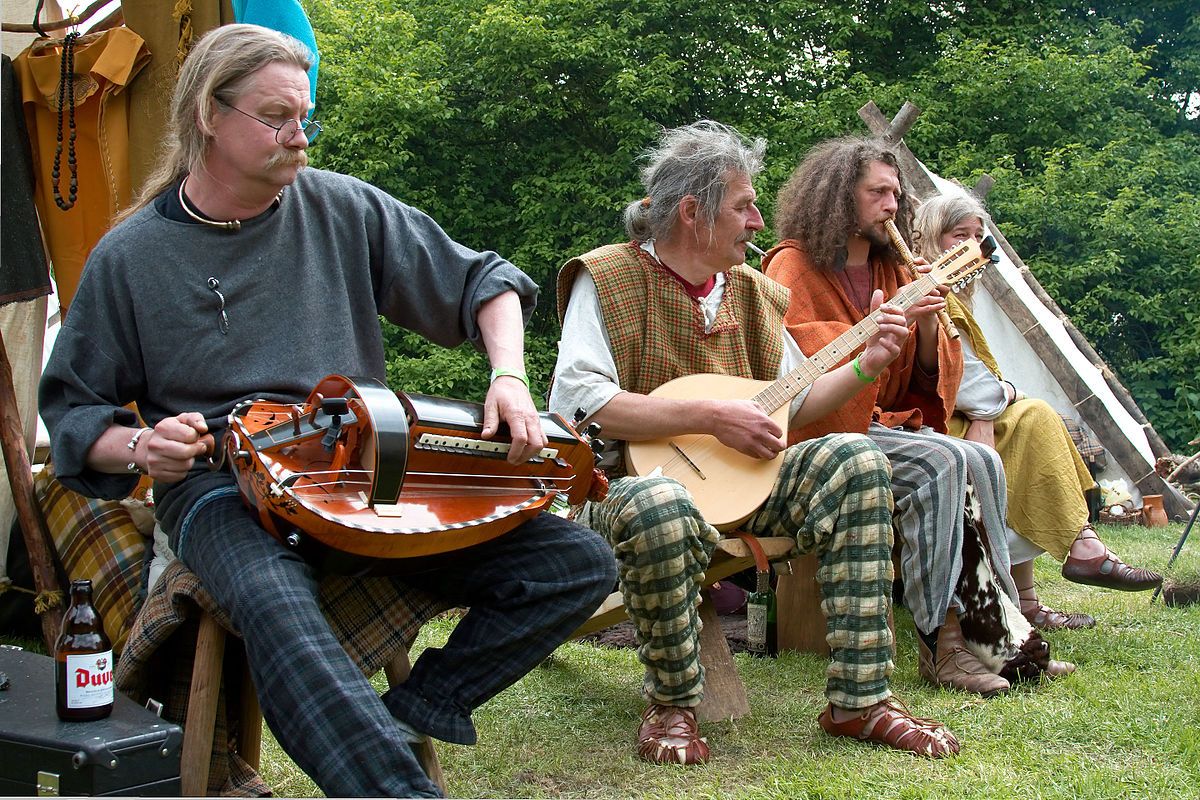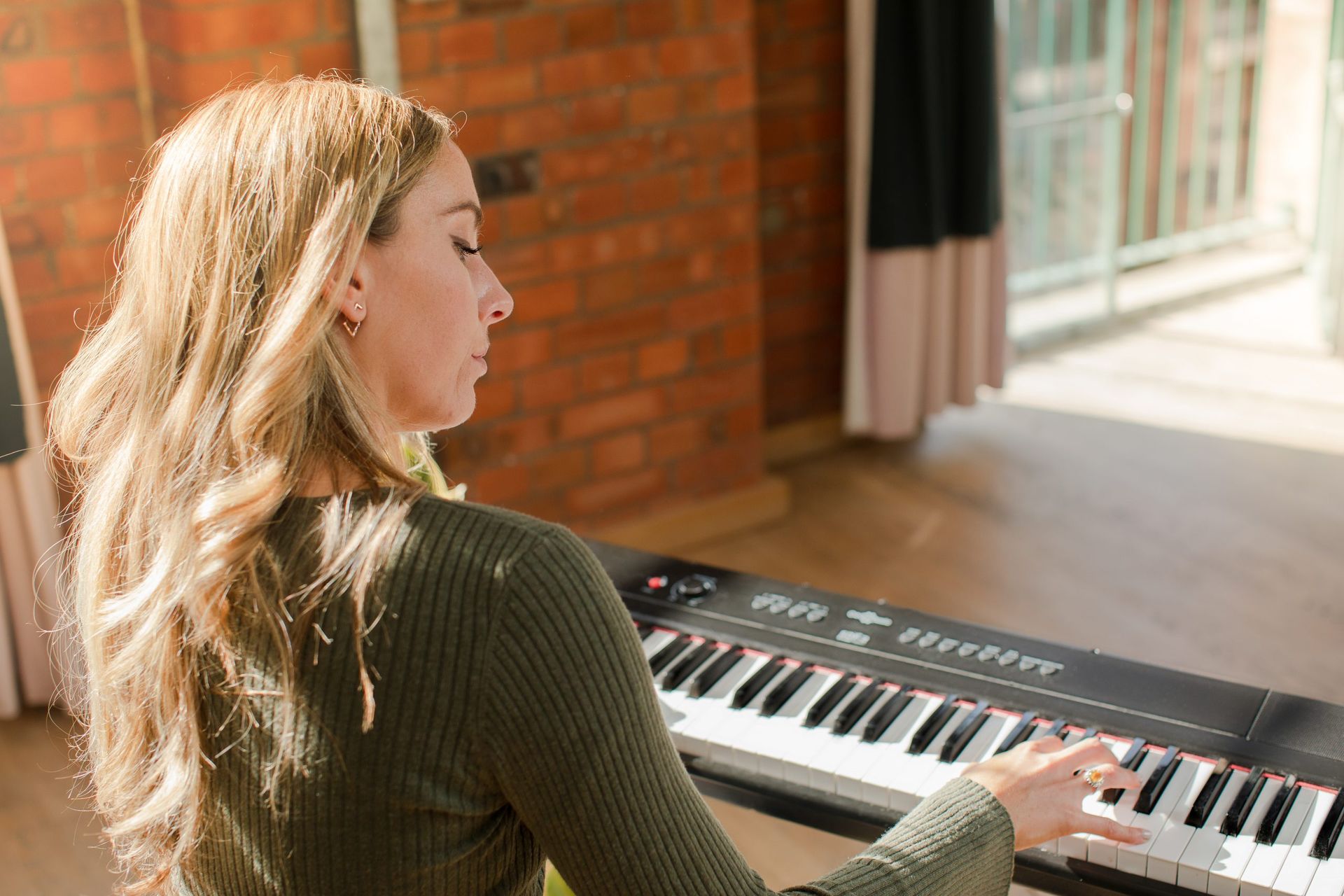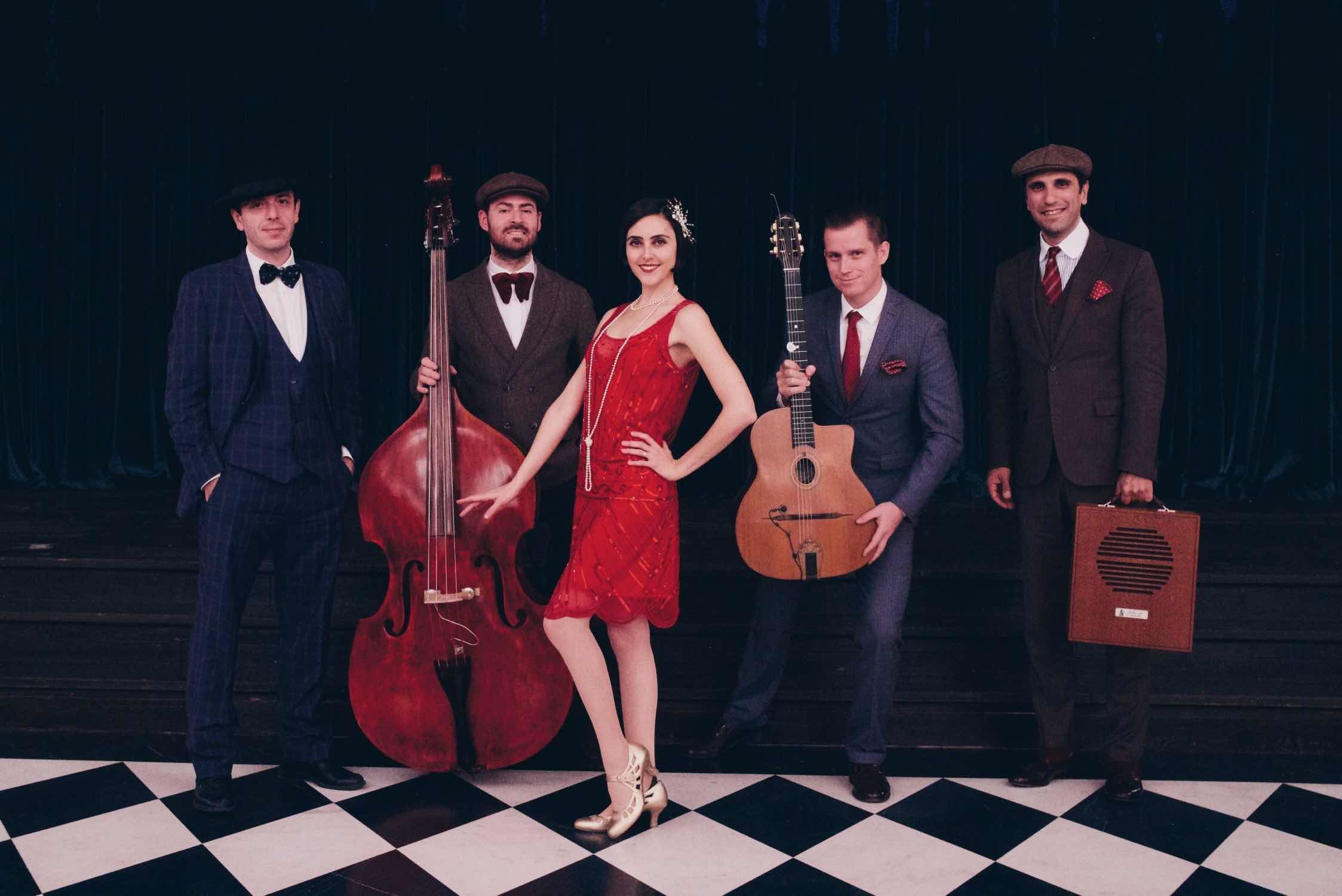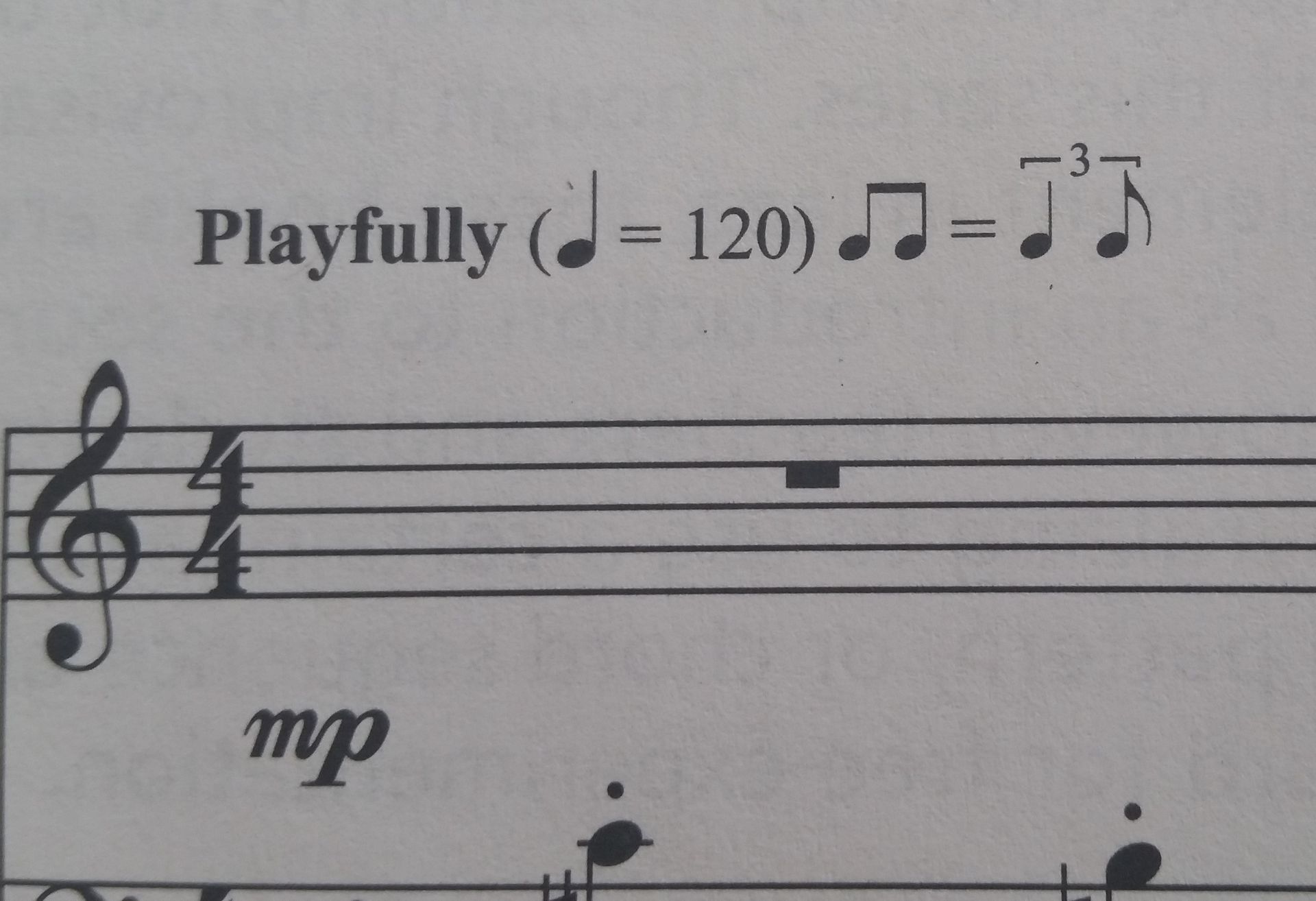Home>Production & Technology>Tempo>What Tempo Is Swing Music?
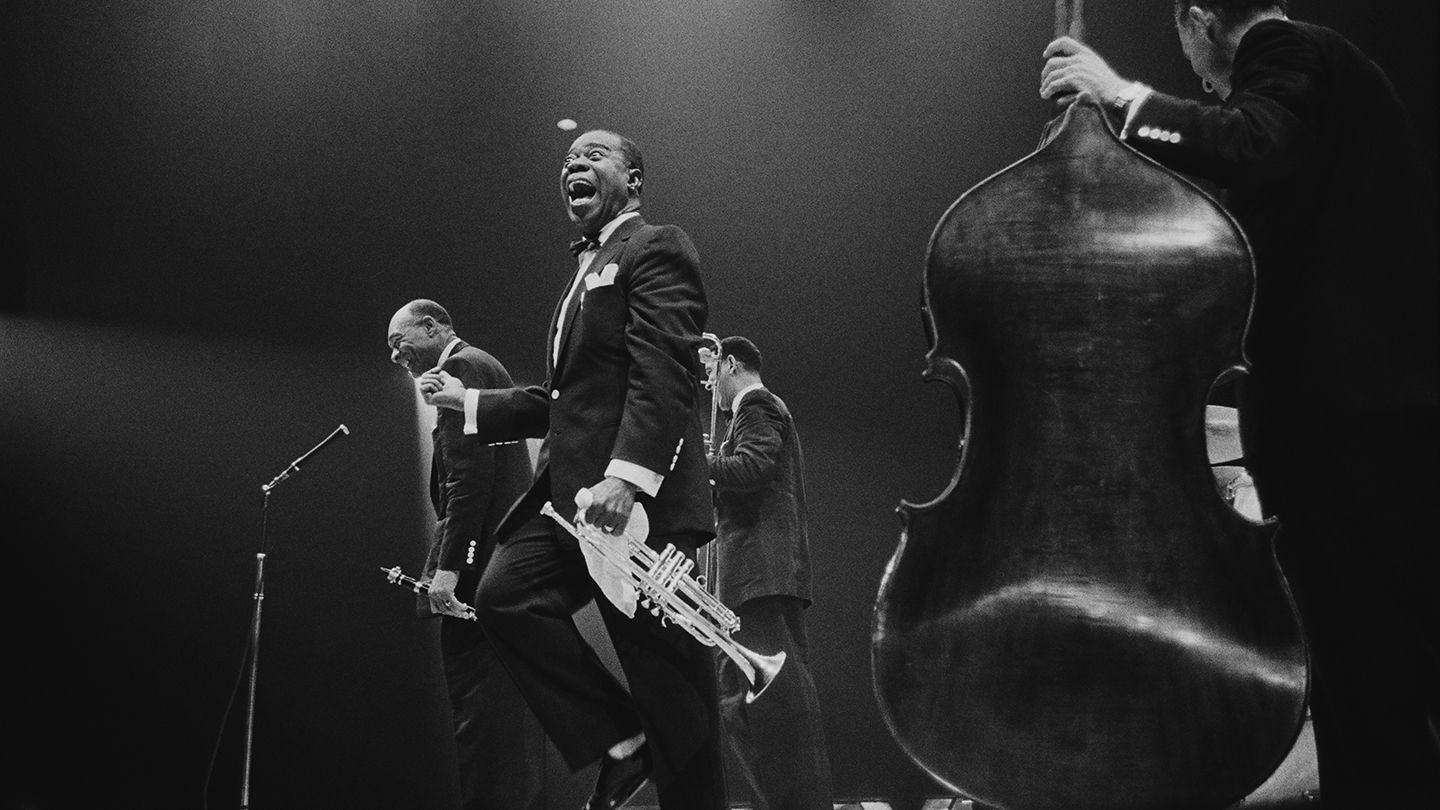

Tempo
What Tempo Is Swing Music?
Modified: January 22, 2024
Discover the perfect tempo for swing music and learn how to bring that infectious rhythm to your next performance. Master the art of swing with our expert tips and techniques.
(Many of the links in this article redirect to a specific reviewed product. Your purchase of these products through affiliate links helps to generate commission for AudioLover.com, at no extra cost. Learn more)
Table of Contents
Introduction
Swing music is a genre that emerged in the United States during the 1930s and 1940s, characterized by its lively rhythm, captivating melodies, and infectious energy. It quickly became popular and remains a beloved style of music to this day. One essential element that sets swing apart from other genres is its distinctive tempo.
Tempo refers to the speed at which a piece of music is played, and it plays a crucial role in shaping the feel and essence of swing music. Understanding the tempo of swing music is important not only for appreciating the genre but also for mastering the accompanying dance style, known as swing dance.
In this article, we will delve into the concept of swing music tempo, exploring its definition, characteristics, and its influence on both the music and the dance. We will also examine some notable swing music artists who have perfectly embodied the essence of swing through their tempo choices. So, let’s grab our imaginary dance shoes and step into the vibrant world of swing music and its captivating tempo.
Definition of Swing Music
Swing music is a genre that originated in the United States during the 1930s and 1940s, and it is often referred to as the “Swing Era.” It emerged as a popular form of dance music, primarily associated with the big band sound. The genre is characterized by its energetic and rhythmic feel, catchy melodies, and a strong emphasis on jazz improvisation.
At its core, swing music is a fusion of various musical elements, including jazz, blues, ragtime, and even elements of classical music. It gained widespread popularity during a time of economic depression and social unrest, offering people an escape through lively and spirited music.
The term “swing” itself refers to the rhythmic style and groove that distinguishes this genre. Swing music is known for its distinct swing feel, which is achieved by emphasizing the offbeat and creating a syncopated rhythm that encourages dancing and movement.
This genre is typically performed by large ensembles, known as big bands, consisting of brass, woodwind, and rhythm sections. These bands are known for their intricate arrangements, featuring powerful horn sections, lively soloing, and a driving rhythm that keeps the music swinging.
Swing music achieved massive popularity during its heyday, becoming the soundtrack of dance halls, nightclubs, and social gatherings. It provided a vibrant and energetic backdrop for people to come together, dance, and forget their worries, making it a symbol of joy and celebration during a challenging era.
While swing music experienced a decline in popularity after the 1940s, it has never truly faded away. Its influence can be heard in modern jazz, pop, and even electronic music. Today, swing music continues to thrive, captivating new generations with its timeless melodies, infectious rhythms, and undeniable swing feel.
The Role of Tempo in Swing Music
Tempo plays a pivotal role in shaping the essence and character of swing music. The swing tempo is characterized by its medium to fast speed, providing the foundation for the energetic and rhythmic feel that defines the genre. The tempo choice sets the mood, determines the groove, and influences the dancers’ movements.
Swing music is typically performed at tempos ranging from around 120 to 240 beats per minute. However, the most common tempo for swing is around 180 beats per minute, creating a lively and upbeat atmosphere that encourages dancing and spontaneity on the dance floor.
The tempo also affects the feel of swing music. It is often described as having a relaxed and flowing quality, allowing the musicians and dancers to express themselves freely. The swinging rhythm and syncopation, combined with the speed of the music, give swing its infectious energy, enabling individuals to let loose and immerse themselves in the music.
Furthermore, the tempo choice directly influences the improvisational aspect of swing music. Jazz improvisation is a key component of the genre, and the tempo provides the framework within which musicians can showcase their creativity and virtuosity. A faster tempo challenges musicians to play intricate and fast-paced solos, while a slower tempo allows for more nuanced and melodic improvisation.
Additionally, the tempo of swing music greatly impacts the dancers’ movements in swing dance. The energetic and upbeat nature of swing music encourages fast footwork, dynamic spins, and intricate partner interactions. A faster tempo calls for quick and agile movements, while a slower tempo allows for more control and a greater emphasis on musicality and connection with the partner.
In summary, the tempo of swing music is essential in creating the lively and rhythmic atmosphere that defines the genre. It sets the mood, influences the dancers’ movements, and provides the platform for musical and improvisational exploration. Whether you’re a musician or a dancer, understanding and embracing the tempo of swing music is crucial for fully immersing yourself in the vibrant world of swing.
Characteristics of Swing Tempo
Swing tempo, with its lively and rhythmic nature, possesses several distinctive characteristics that contribute to the genre’s infectious energy and vibrant atmosphere. These characteristics are what make swing music instantly recognizable and create a unique experience for both musicians and dancers.
One of the key characteristics of swing tempo is its syncopated rhythm. Syncopation refers to the placement of accents on offbeats or weak beats, creating a sense of unpredictability and groove. In swing music, the rhythm section, particularly the drums and bass, play a vital role in accentuating the syncopation, driving the music forward, and giving it a swinging feel.
Another essential characteristic is the use of swung eighth notes. In swing music, the eighth notes are typically played with a slight delay on the second half, creating a distinctive triplet-like rhythm. This swing feel is integral to the genre’s identity and contributes to its relaxed yet energetic quality.
Swing tempo also showcases dynamic contrasts. The music frequently alternates between sections of high intensity and moments of relative calm. This contrast creates an engaging and exciting listening experience, building anticipation and adding depth to the overall composition.
Additionally, swing tempo often allows for improvisation and soloing. Musicians have the freedom to express their creativity and explore musical ideas within the framework of the tempo. Soloists can showcase their virtuosity, inventiveness, and unique style, adding an element of spontaneity to the music.
Moreover, swing tempo lends itself well to dancing. Its medium to fast speed provides an energetic foundation for various swing dance styles, such as Lindy Hop, Charleston, and Balboa. The swinging rhythm and syncopation create a lively and infectious beat that lends itself to dynamic and exciting partner interactions, footwork, and aerial moves.
In summary, swing tempo is characterized by its syncopated rhythm, swung eighth notes, dynamic contrasts, improvisational opportunities, and its ability to create an engaging environment for dancers. These characteristics not only distinguish swing music from other genres but also contribute to its timeless appeal and its enduring popularity among musicians and dancers alike.
Famous Swing Music Artists and Their Tempo
Swing music has been shaped and defined by the talents of numerous influential artists who have left a lasting impact on the genre. These artists, known for their unique styles and musical contributions, have showcased their versatility and mastery of tempo in their iconic swing performances.
One renowned swing music artist is Count Basie, a pianist, composer, and bandleader who played a crucial role in the development of the swing era. Basie’s band, the Count Basie Orchestra, was known for its impeccable swing rhythm and impeccable sense of time. Basie’s tempo choices often leaned towards the medium to fast range, creating an infectious energy that propelled the band’s spirited performances.
Another legendary figure in swing music is Duke Ellington, a composer, pianist, and band leader known for his innovative arrangements and his ability to create sophisticated and dynamic swing compositions. Ellington’s tempo choices varied, ranging from slow and lyrical ballads to fast-paced and energetic tunes. His versatility in tempo selection showcased his mastery of swing music and his ability to evoke different emotions through his compositions.
Benny Goodman, often referred to as the “King of Swing,” was a clarinetist and bandleader who popularized swing music during the 1930s. Goodman’s band was known for its tight and precise playing, as well as its ability to swing hard. Goodman’s tempo choices leaned towards the faster end of the spectrum, creating an exhilarating and infectious energy that captivated audiences around the world.
Louis Armstrong, a trumpeter, vocalist, and one of jazz music’s most iconic figures, also made significant contributions to swing music. Armstrong’s phenomenal sense of time and his ability to swing effortlessly were key elements in his performances. His tempo choices were often upbeat and lively, enhancing the joyous and celebratory nature of his music.
Ella Fitzgerald, known as the “First Lady of Song,” was a jazz vocalist renowned for her impeccable phrasing, scat singing, and ability to swing. Fitzgerald’s tempo choices showcased her versatility as a vocalist, ranging from leisurely and laid-back ballads to fast and rhythmic up-tempo tunes. Her sense of swing and her ability to navigate different tempos with ease solidified her status as one of the greatest swing artists of all time.
These are just a few examples of the many swing music artists who have left an indelible mark on the genre through their unique approaches to tempo. Their contributions have not only shaped the swing era but have continued to influence and inspire musicians and swing enthusiasts to this day.
The Influence of Tempo on Swing Dance
The tempo of swing music has a profound influence on the style, dynamics, and movements of swing dance. The energetic and rhythmic nature of swing music, coupled with its varied tempo choices, provides a foundation for the expression, creativity, and improvisation that define swing dance.
Swing dance encompasses a variety of styles, including Lindy Hop, Charleston, Balboa, and East Coast Swing. Each style has its unique characteristics, but they all share a common foundation: the swing music tempo. The tempo sets the pace, dictates the energy level, and guides the dancers’ movements and interactions.
A faster swing tempo calls for quick footwork, energetic spins, and dynamic movements. Dancers must keep up with the beat, showcasing agility, precision, and athleticism. The faster tempo encourages high-energy dancing, with partners seamlessly connecting and exchanging moves in sync with the music.
On the other hand, a slower tempo allows dancers to explore more intricate footwork patterns, focus on musicality, and emphasize connection and partner interaction. The slower speed creates space for dancers to express themselves with ease, focusing on the nuances of the music and the subtleties of their movements.
Furthermore, the tempo influences the styling and improvisational aspects of swing dance. A faster tempo encourages dancers to incorporate more aerials, flashy footwork, and intricate partner moves. The increased energy of the music pushes dancers to explore new and exciting variations, showcasing their creativity, musicality, and technical skills.
Conversely, a slower tempo allows for more controlled and expressive movements, giving dancers the opportunity to focus on nuances of rhythm, dynamics, and interpretation. The slower pace lends itself well to intricate footwork variations, extended pauses, and dramatic moments of tension and release.
The tempo also has an impact on the connection between partners in swing dance. Faster tempo necessitates quicker reaction time and a stronger connection to maintain synchrony and synchronization. Dancers must be responsive to each other’s movements and maintain a steady flow and rhythm in their partnership.
In summary, the tempo of swing music is an essential element in shaping the style, dynamics, and movements of swing dance. Whether it’s the high-energy footwork and spins of a fast tempo or the intricate footwork and expressive movements of a slower tempo, the tempo guides the rhythm and energy, encouraging dancers to push their boundaries and create a unique and enjoyable experience on the dance floor.
Analysis of Swing Music Tempo Patterns
Swing music is known for its vibrant and rhythmic nature, and a closer analysis of its tempo patterns reveals interesting insights into the genre’s musical structure and its impact on the dance floor. The tempo patterns in swing music showcase a diverse range of rhythms, energizing beats, and opportunities for musical expression.
One prevalent tempo pattern in swing music is the medium to fast-paced tempo, typically ranging from around 180 to 220 beats per minute. This tempo pattern creates a lively and energetic atmosphere, perfect for quick footwork, dynamic partner moves, and spirited improvisation. It is often associated with the high-energy Lindy Hop and Charleston styles of swing dance.
However, swing music also embraces slower tempo patterns to provide contrast and variation. These slower tempos, ranging from around 100 to 140 beats per minute, offer a more relaxed and laid-back feel, allowing for expressive movements, extended pauses, and a greater focus on musicality and partner connection. This tempo pattern is often associated with styles such as Slow Balboa and Blues, where dancers can explore intricate footwork and convey emotion through subtle movements.
Within swing music, variations in tempo often occur to highlight specific sections of a song. A common example is the use of a faster tempo during instrumental solos, allowing musicians to showcase their virtuosity and improvisational skills. These tempo shifts enhance the dynamics of the music, creating moments of heightened excitement and anticipation.
Another interesting aspect of swing music tempo is the use of tempo breaks or pauses. These intentional pauses or brief shifts to a slower tempo provide dancers with a moment to catch their breath, accentuate a musical climax, or set up a dramatic choreographic moment. These tempo breaks add depth to the musical arrangement and create opportunities for creative and unexpected dance moves.
Furthermore, swing music often features tempo accelerations or decelerations within a single piece. These gradual changes in tempo can heighten the intensity of the music and dancers’ movements, building anticipation and creating a sense of progression and excitement.
Overall, the tempo patterns in swing music display a diverse and dynamic range, catering to the various styles of swing dance and allowing for expressive and creative movement on the dance floor. From fast-paced and energetic tempos that ignite the dance floor to slower tempos that emphasize musicality and connection, swing music’s tempo patterns contribute to the genre’s timeless appeal and its ability to captivate dancers and audiences alike.
Conclusion
In conclusion, the tempo of swing music plays a vital role in shaping the essence, dynamics, and experience of the genre. The energetic and rhythmic nature of swing tempo sets the stage for lively and captivating performances. It creates the foundation for the spirited improvisation of musicians and the dynamic movements of swing dancers.
Swing music, characterized by its syncopated rhythm, swung eighth notes, and dynamic contrasts, invites individuals to immerse themselves in its infectious energy and enjoy the freedom of expressive movement. The tempo variations within swing music, from medium to fast-paced tempos that invite high-energy footwork to slower tempos that promote musicality and connection, cater to the diverse styles of swing dance.
Through the mastery of tempo, swing music pioneers like Count Basie, Duke Ellington, Benny Goodman, Louis Armstrong, and Ella Fitzgerald have left a lasting legacy, influencing generations of musicians and dancers. Their choices in tempo have shaped the swing era and have continued to inspire musicians, dancers, and swing enthusiasts worldwide.
Additionally, the tempo patterns in swing music, with their use of tempo breaks, accelerations, decelerations, and variations, add depth and excitement to the composition. They create opportunities for dynamic solos, dramatic moments, and unexpected dance moves, enhancing the overall experience of the genre.
Whether you’re a musician or a swing dancer, understanding and embracing the tempo of swing music is essential for fully immersing oneself in the vibrant world of swing. It allows for self-expression, creativity, and joyful interaction with the music and fellow dancers.
So, as you dive into the realm of swing music, pay attention to the tempo, feel the rhythm, let it guide your movements, and allow yourself to be swept away by the infectious and timeless allure of swing.


